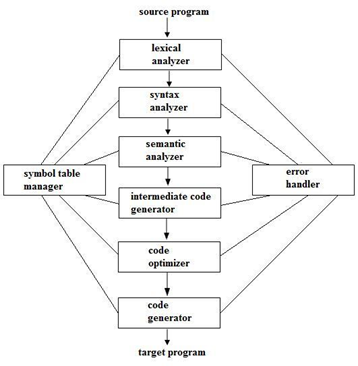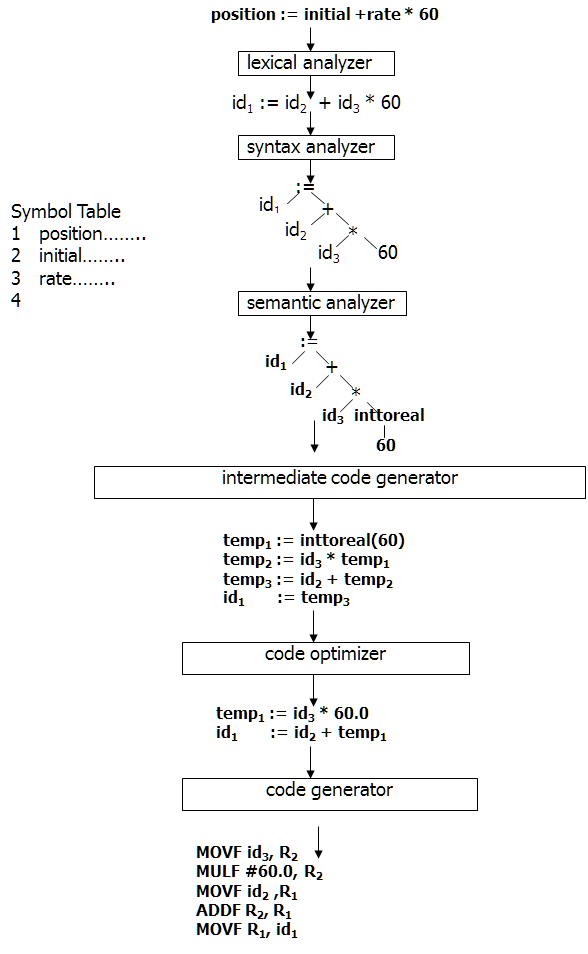What is a compiler?
A compiler is a computer program that transforms a source code written in a programming language into another computer language or target language (usually in form of binary, machine language, assembly language or the language of the source language). The reason of compiling programming language to target language is to create an executable program.
Compilation Stages
Analysis Phase
- Lexical Analysis
The first phase of a compiler is called lexical analysis or scanning. The lexical analyzer reads the stream of characters making up the source program and groups the characters into meaningful sequences called lexemes. For each lexeme, the lexical analyzer produces as output a token.
- Syntax Analysis
The second phase of the compiler is syntax analysis or parsing. The parser uses the first components of the tokens produced by the lexical analyzer to create a tree-like intermediate representation that depicts the grammatical structure of the token stream. A typical representation is a syntax tree in which each interior node represents an operation and the children of the node represent the arguments of the operation.
- Semantic Analysis
The semantic analyzer uses the syntax tree and the information in the symbol table to check the source program for semantic consistency with the language definition. It also gathers type information and saves it in either the syntax tree or the symbol table, for subsequent use during intermediate-code generation.
An important part of semantic analysis is type checking, where the compiler checks that each operator has matching operands. For example, many programming language definitions require an array index to be an integer; the compiler must report an error if a floating-point number is used to index an array.
Synthesis Phase
- Intermediate Code Generation
In the process of translating a source program into target code, a compiler may construct one or more intermediate representations, which can have a variety of forms. Syntax trees are a form of intermediate representation; they are commonly used during syntax and semantic analysis.
After syntax and semantic analysis of the source program, many compilers generate an explicit low-level or machine-like intermediate representation, which we can think of as a program for an abstract machine. This intermediate representation should have two important properties: it should be easy to produce and it should be easy to translate into the target machine.
- Code Optimization
The machine-independent code-optimization phase attempts to improve the intermediate code so that better target code will result. Usually better means faster, but other objectives may be desired, such as shorter code, or target code that consumes less power.
- Code Generation
The code generator takes as input an intermediate representation of the source program and maps it into the target language. If the target language is machine code, registers or memory locations are selected for each of the variables used by the program. Then, the intermediate instructions are translated into sequences of machine instructions that perform the same task. A crucial aspect of code generation is the judicious assignment of registers to hold variables.
Here is an example of compilation stages :



